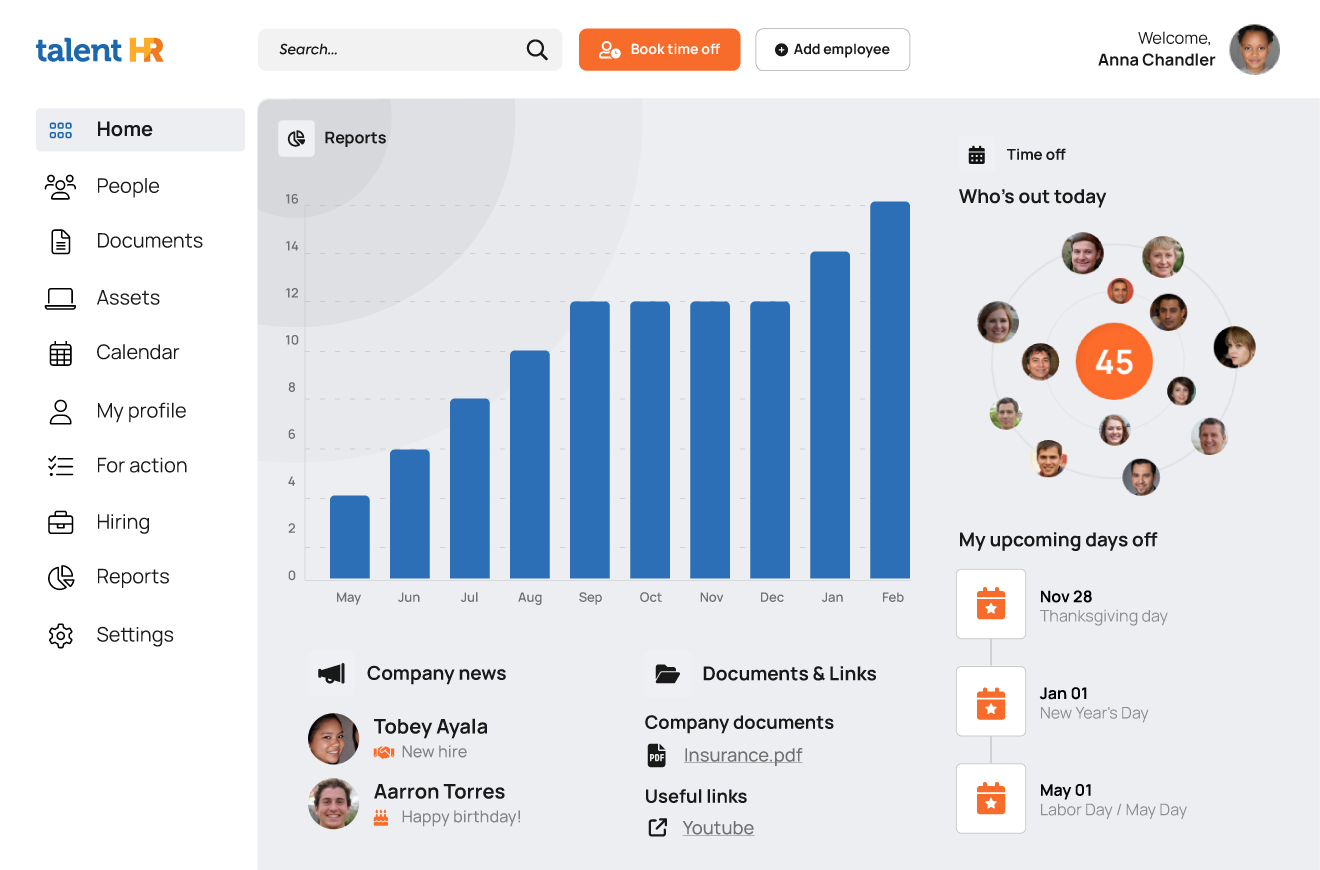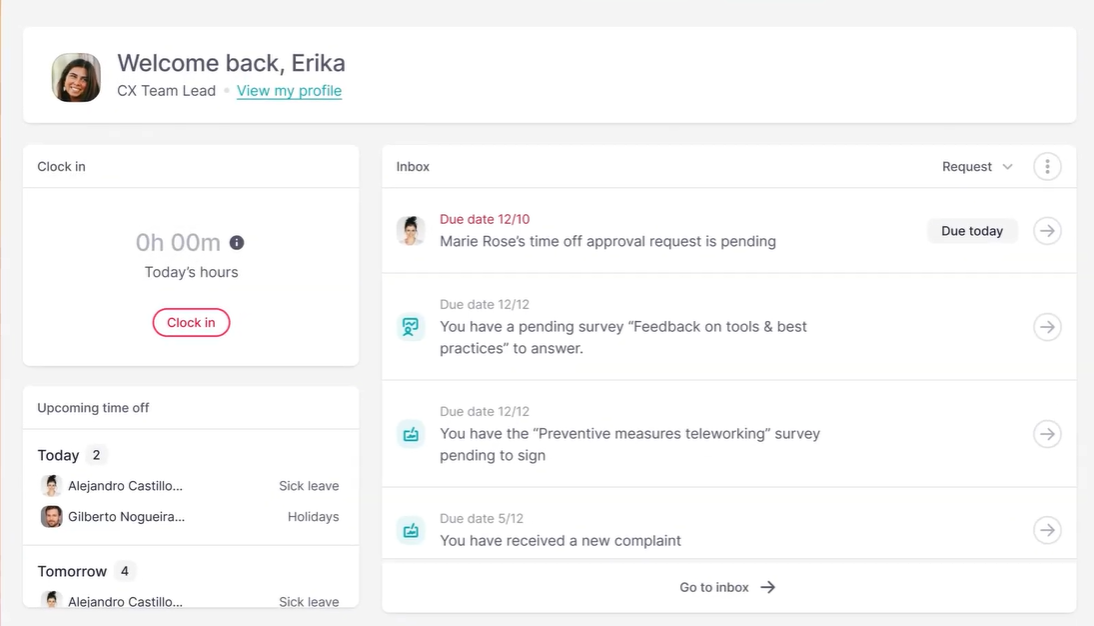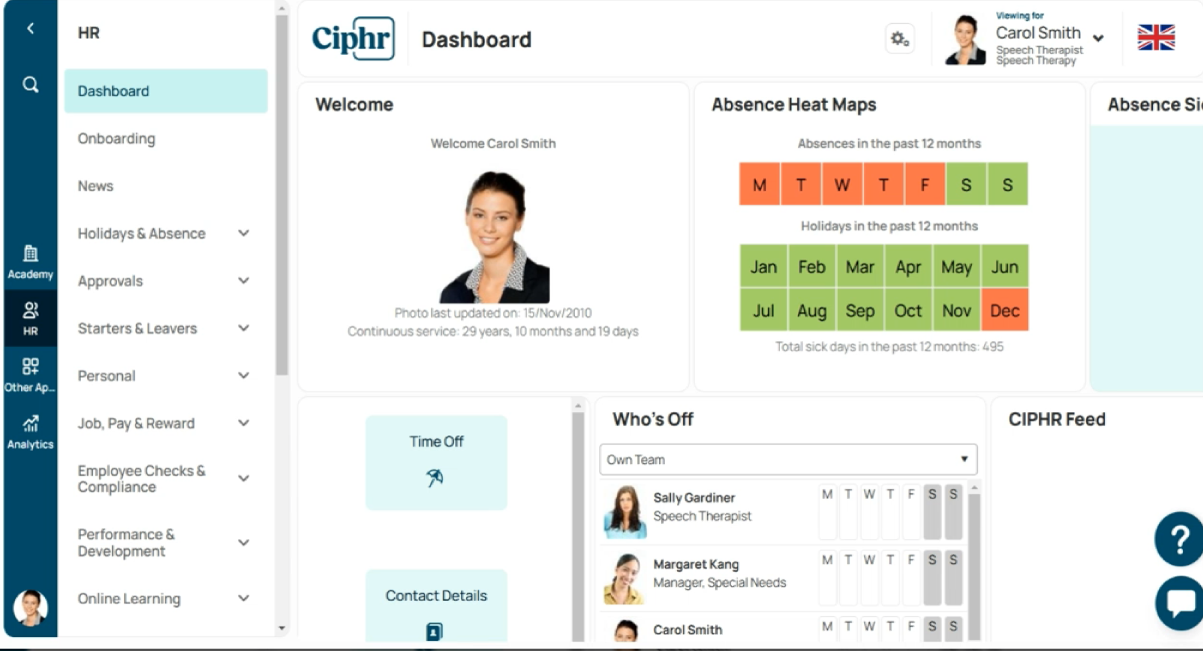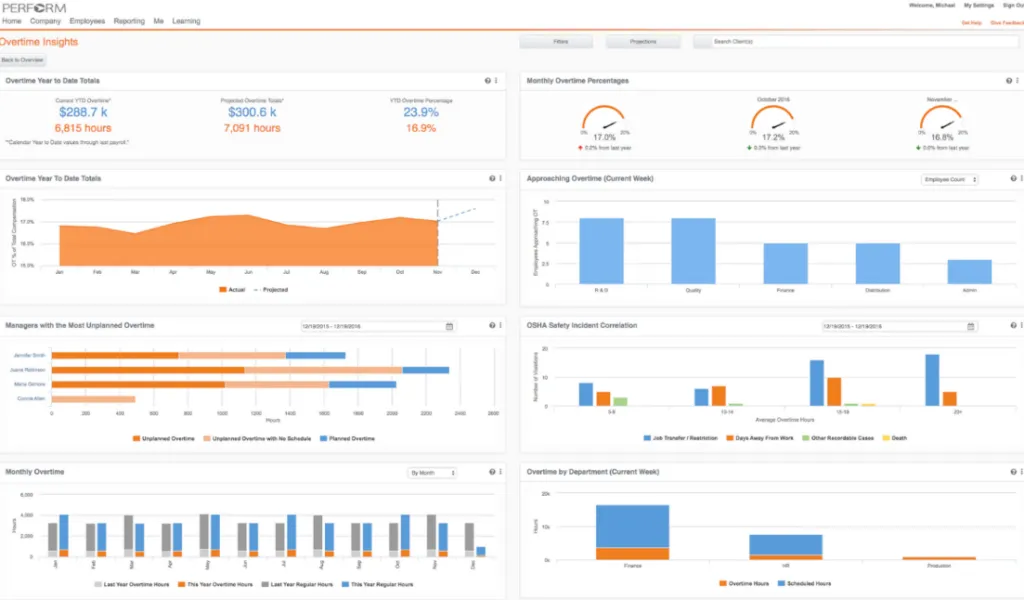
4 HR Software for Manufacturing Companies (2025)
Manufacturing businesses are in the spotlight, and government figures have mentioned the sector when they decide to campaign for growth, almost as if it were effortless to manufacture. But getting manufacturing right, business owners know, comes with a fair share of challenges. Some of them are keeping production lines running, complying with changing labor laws, and managing a workforce that often works in shifts around the clock. Manufacturing also has to deal with one of the highest turnover rates of any industry.
There's more, too. On top of that, HR tasks like tracking time off, handling employee documentation, and reducing turnover can quickly become overwhelming if businesses still rely on spreadsheets and outdated processes.
That’s where HR software designed for manufacturing companies makes a real difference. With the right system in place, owners can simplify workforce management, stay compliant, and make sure employees have the tools they need to succeed—all while relieving those administrative headaches.
In this guide, we’ll break down the key features to look for, the biggest benefits, and the top HR software options for manufacturing businesses in 2025.
Key Features: What to look for in HR Software for Manufacturing
Not all payroll and HR solutions are built the same, and neither are all industries. When it comes to manufacturing, companies need a system that can adapt to their sector.
Also, quite possibly, many manufacturing companies don't have an HR department. This is completely understandable. And a tool that manufacturing can use should be easy to manage for both owners, supervisors, or whoever needs to access it.
Considering those points, here are the must-have features to look for in HR software for manufacturing companies:
Dealing with Turnover (and Improving Retention)
HR professionals from the manufacturing industry usually cite turnover as one of the most difficult challenges that the sector faces. In a survey from 2023, 61% of respondents reported an average voluntary turnover rate between of 5.1 and 10%. Turnover is expensive and can lead to attrition. This means that manufacturing companies should look for HR software that:
- Can get them employee metrics on, for example, employee engagement, so they can tackle turnover before it happens and even improve retention.
- Can allow them to onboard and offboard employees from a single screen.
- Can collect people analytics so that each group can be properly differentiated, and special metrics taken from them.
This is not the ideal scenario. The ideal scenario would be having no turnover. But since it's a cold, hard truth about the sector, better to use a tool that can at least help companies deal with it.
Employee Self-Service
A good HR system allows workers to access their pay stubs, request time off, update personal details, and check schedules—all without needing to go through HR. This gets rid of administrative bottlenecks and also allows employees to manage their own information whenever they need to.
For example, take the case of a production worker requiring a copy of their latest paycheck to apply for a loan. Instead of tracking down HR (or whoever takes care of this) and waiting for a response, they can log into the system, download the document, and move on with their day.
Mobile App for Deskless Employees
A mobile-friendly HR system, even integrated with mobile payroll solutions, means employees can access the info even if they don't have a desk and computer. If they're on the factory floor, in a warehouse, or working in the field, employees and managers should be able to clock in and out, submit leave requests, access policies, and receive company updates directly from their phones.
Time Off Tracking
With different shift patterns, seasonal demands, and strict staffing requirements, a reliable time off tracking feature will help the manufacturing sector define shifts. The best HR software allows employees to request time off digitally while giving managers a clear view of who's available at any given time.
For instance, let’s say a factory worker requests a day off during peak production season. A smart HR system can flag potential conflicts and suggest alternative dates before the manager even reviews the request.
Document Management
Even if they don't have an HR department, manufacturing businesses deal with a lot of HR paperwork—contracts, compliance forms, training certificates, safety policies, and more. A reliable HR system should help companies manage their documents, help them store everything in one place, and make it easy to retrieve and update files. Look for software that supports e-signatures, secure cloud storage, and automatic reminders for document renewals to keep everything up to date.
Training Tool Integration (e.g., Safety Compliance Training)
Employee training is fundamental in manufacturing, especially when it comes to managing employee safety and compliance. The right HR software should integrate with training platforms to track certifications, schedule safety courses, and check that employees complete mandatory training on time. Some systems even offer built-in learning management tools that allow companies to assign and monitor training programs directly from the HR platform.
How to use AI in HR: 5 Examples for 2025 →
Is HR Software the Same as a Shop Management System?
Not exactly—but there’s a lot of overlap. HR software solutions, like TalentHR, focus on workforce management, including employee classifications, recruitment, compliance, and performance tracking. However, many modern HR platforms also include features commonly found in shop management systems, such as shift scheduling, time tracking, and workforce analytics.
While a shop management system primarily handles production workflows, inventory tracking, and job scheduling, HR software solutions are increasingly offering tools that support shop floor operations, which make them a good addition—or even a partial replacement—for traditional shop management systems.
Benefits of HR Software for Manufacturing Companies
Manufacturing businesses must be efficient. Any bottleneck in operations can lead to production delays, compliance issues, or unnecessary costs. Managing HR manually only adds to the workload, especially with shift-based employees, high turnover rates, and strict labor laws to follow. That’s where HR software makes a real impact. Let’s take a look at its biggest benefits for HR processes:
Streamlined Operations and With a Lower Admin Workload
HR teams in manufacturing often juggle scheduling, payroll, compliance paperwork, and employee requests—most of which can be time-consuming if handled manually. With HR software, many of these tasks become automated.
For example, instead of manually tracking attendance and processing time-off requests through emails or spreadsheets, an automated system can handle it all—as it approves requests, flagging conflicts, and updating schedules instantly.
Fewer Compliance Risks
Manufacturing companies must comply with strict labor laws, workplace safety regulations, and union agreements. Not keeping proper records can lead to legal trouble or fines.
A durable HR system has an easy-to-access file-viewing system that automatically summarizes what each document is about. So that, when manufacturing companies need to track down a record or document, they can do it quickly enough.
Real-Time Workforce Insights via Reporting Tools
Making informed workforce decisions is impossible without the right data. HR software provides real-time analyticsincluding and reporting tools that help managers track workforce trends, monitor attendance patterns, and identify potential issues before they escalate.
For example, if a factory is experiencing high turnover in a specific department, HR software can come up with metrics that can help owners realize why—whether it’s scheduling conflicts, lack of training, or low employee engagement. With this data, managers can take proactive steps to improve retention, optimize scheduling, or address employee concerns.
The Simplest Way to Handle Employee Document Signing →
4 HR Software for Manufacturing: How to Stand Out in 2025
Manufacturing businesses must have HR software that can handle compliance, shift scheduling, and labor management without slowing down production. The best tools in 2025 combine automation, mobile accessibility, and customized solutions to support both manufacturing workers and office staff.
1. TalentHR

TalentHR is a unified HR solution that connects the factory floor to the front office, in a way that assures that workforce management is as optimized as your production line. With an intuitive, mobile-friendly platform, employees can request time off, access documents, and check schedules from anywhere, whether they’re on the shop floor or on the go.
Manufacturers deal with strict compliance requirements and complex shift schedules, and TalentHR simplifies it all. Centralized employee records keep safety certifications, training manuals, and contracts in one place, while automated onboarding gets new hires up to speed before their first shift. Plus, the platform offers an AI-powered tool to create HR policies for manufacturing, as well as an asset management tool. Need to fill a role fast? The quick-set applicant tracking system makes finding workers a snap.
TalentHR also allows companies to offboard employees from the same platform that they had onboarded them. As such, it takes care of the complete employee lifecycle.
2. Factorial

Factorial offers HR management tools for the manufacturing industry that help businesses handle time tracking, shift assignments, and absence management. Employees can clock in and out using a QR code, mobile app, or desktop, which makes it easy to track hours whether they’re on the factory floor or working remotely.
The platform has a clean design and step-by-step training features that make it simple for new hires to get started, while tools like performance tracking, surveys, and goal-setting help with ongoing workforce management. Some users appreciate its ease of use, though others note occasional mobile bugs and slow customer support.
3. Ciphr

Ciphr’s cloud-based HR software is designed to keep manufacturing teams connected and running, even across multiple sites. With self-service access, employees can manage holidays, payroll details, and documents without constant HR intervention. The platform also integrates with background check services like Experian and TrustID, making hiring more efficient.
For HR teams, Ciphr provides detailed workforce analytics and applicant tracking, which helps manufacturers find and retain the right talent. However, some users note that many essential features require additional paid modules, which can limit cost-effectiveness. Additionally, reporting can be complex for those without advanced Excel skills, despite available training.
4. Paycor

Paycor offers HR and payroll software for manufacturing businesses too. With automated overtime tracking, compliance tools, and learning management systems, it helps manufacturers recruit skilled workers, retain talent, and track labor costs. Its time and attendance tracking system combines with features for onboarding of seasonal and temporary staff.
But some users report confusing registration processes and timecard approval issues, as well as difficulties in adjusting PTO. Others talk about overpromised sales claims, which can lead to mismatched expectations.
Manage your Manufacturing Workforce with HR Software
Choosing the right HR software can make all the difference in managing a manufacturing workforce. Some owners will be eagerly awaiting to streamline manufacturing payroll (and they'll need a software with a well-documented API to do that). Some others will want a way to quickly onboard and offboard workers. Others will want to fight against turnover.
Almost every HR software out there will help with these issues. But few of them will do so from a single screen and at such an affordable price point as TalentHR.
HR reps and business owners should try TalentHR today and see how it can help them manage their workforce.
You can register now for free. It takes seconds to set it up.


